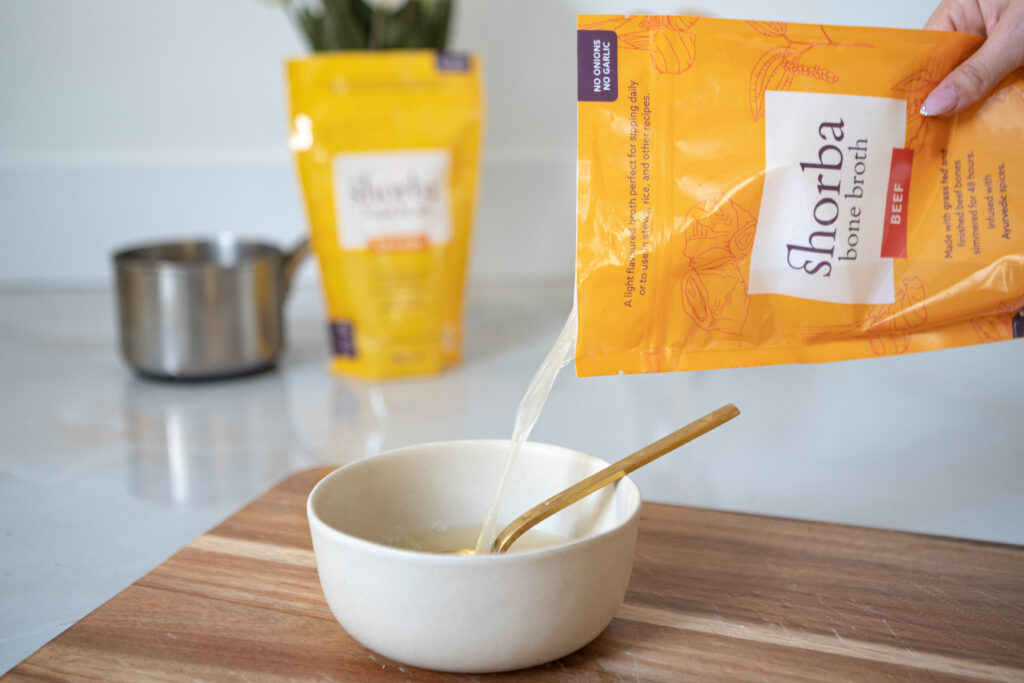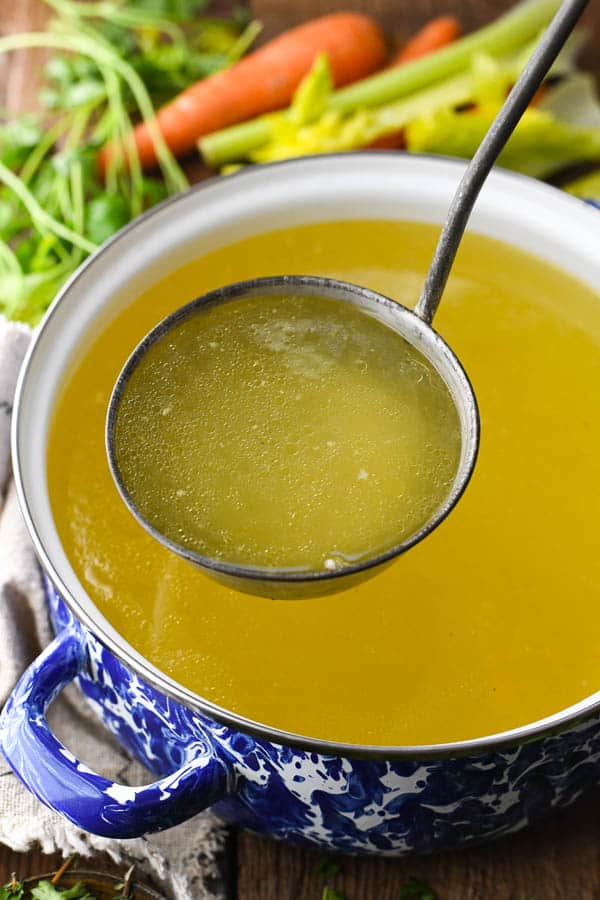What Makes Organic Bone Broths the New Superfood?
The Ultimate Guide to Making and Taking Pleasure In Organic Bone Broths at Home
Bone brew has actually acquired interest for its various health and wellness advantages and cooking versatility. Crafting natural bone brew at home enables people to regulate the top quality of active ingredients, ensuring a healthy end result. Recognizing the choice of bones, vital flavor components, and correct cooking techniques is crucial. As the procedure unravels, one may question just how to boost their brew beyond the basics and integrate it into everyday dishes for boosted flavor and nutrition.
Recognizing the Health Advantages of Bone Broth
Bone broth has actually been a staple in different foods for centuries, its wellness benefits have acquired significant focus in recent years. Rich in collagen, amino acids, and minerals, bone broth is typically touted for its potential to sustain joint wellness, enhance gut feature, and boost skin elasticity. The gelatin acquired from cooked bones might aid food digestion and help seal the intestine lining, possibly relieving issues like leaky digestive tract syndrome.Furthermore, the visibility of nutrients such as glucosamine and chondroitin may add to reduced swelling and pain alleviation in joints. In addition, bone broth is moisturizing and can work as a nourishing base for stews and soups. Many supporters likewise claim that it increases the body immune system, thanks to its mineral account. In general, the resurgence of rate of interest in bone broth is linked to its perceived capability to advertise general health and support different bodily features.
Selecting the Right Bones for Maximum Taste and Nutrition
What variables should one take into consideration when picking bones for broth prep work? The sort of bones used substantially impacts both flavor and nutritional value. Initially, it is crucial to select bones that include a mix of marrow bones, joint bones, and weighty bones. Marrow bones provide rich flavors and healthy fats, while joint bones add collagen, boosting the brew's dietary profile.Additionally, sourcing bones from pasture-raised or grass-fed pets assurances better and even more nutrients, as these animals are typically healthier. The freshness of the bones is also important; choosing bones from local butchers or farmers' markets can ensure excellent taste. Bone size matters also; bigger bones release even more jelly, leading to a richer broth. Considering the kind of pet-- beef, chicken, or fish-- can affect the last taste, permitting for versatile brew options customized to private choices.
Vital Active Ingredients for a Tasty Bone Brew

Quality Bone Option
The structure of a savory bone brew depends on the cautious option of high-quality bones. Sourcing organic, pasture-raised or grass-fed bones is important, as these alternatives are more probable to be devoid of damaging ingredients and provide superior nutrients. Selections such as lamb, beef, or chicken bones each pass on distinctive tastes and health benefits. Bone types, including marrow bones, knuckle bones, and oxtails, contribute jelly and collagen, enhancing the broth's structure. Selecting bones with a mix of meat and connective tissue can also add richness and depth. Additionally, picking bones with visible marrow guarantees a nutrient-dense brew, elevating the overall high quality. Eventually, spending time in top quality bone choice lays the foundation for a nourishing and scrumptious broth.
Aromatic Taste Enhancers
Picking top notch bones establishes the stage for a healthy and abundant bone broth, but it is the addition of fragrant taste boosters that absolutely boosts the meal. Components such as onions, garlic, and carrots not only present sweet taste however likewise add depth to the broth. Fresh herbs like bay, parsley, and thyme leaves include an aromatic note, while flavors such as black peppercorns and cloves introduce heat and complexity. Additionally, including a splash of apple cider vinegar can aid essence minerals from the bones, enriching the broth. These taste enhancers produce an unified blend, transforming a straightforward broth into a full-flavored foundation for soups, stews, or sauces, making it a functional component in any type of cooking arsenal.
Step-by-Step Guide to Making Bone Broth at Home
Producing bone broth at home can be a gratifying culinary venture that boosts both taste and nourishment in numerous dishes. To begin, one need to select high-quality bones, preferably from grass-fed or organic resources. Toasting the bones at 400 ° F for about thirty minutes can magnify the taste. Next, transfer the roasted bones to a big pot or sluggish stove and cover them with cool water. Including a sprinkle of vinegar helps extract minerals from the bones.Include aromatic veggies like onions, carrots, and celery for included depth, in addition to natural herbs and spices as wanted. Bring the mixture to a boil, then minimize to a simmer. It is important to let the broth simmer for a minimum of 12 hours, though much longer is preferable for optimum splendor. Ultimately, strain the brew via a fine-mesh filter and store it in closed containers, all set to boost dishes with its nourishing significance.

Tips for Developing Your Bone Broth Simmer
While simmering bone brew, keeping the best temperature and timing is essential for accomplishing a rich and savory result. A gentle simmer, ideally in between 190 ° F and 210 ° F, assists essence optimum nutrients and flavors without steaming, which can make the broth cloudy. It is suggested to monitor the pot carefully, readjusting the warm as needed to maintain this simmer.Timing is additionally essential; a longer simmer, generally ranging from 12 to 48 hours, allows for deeper taste extraction and collagen release. For hen bones, a 12 to 24-hour simmer suffices, while beef bones gain from longer food preparation times.Additionally, skimming any foam or impurities that climb to the surface area during the initial few hours can boost the broth's clearness and taste. Finally, ensuring the pot is covered throughout simmering helps to preserve moisture and magnify the tastes, producing a more rewarding final result.
Innovative Ways to Utilize Bone Brew in Your Cooking
Integrating bone broth right into different meals raises both taste and nutritional worth. Chefs and home cooks alike find that making use of bone broth as a base for soups and stews improves depth and splendor, changing basic dishes right into passionate dishes. It can also be utilized in risottos, where the broth changes water, enabling the grains to absorb its mouthwatering essence.Additionally, bone broth functions as an outstanding food preparation fluid for grains like quinoa or rice, infusing them with nutrients and flavor. For an added twist, it can be utilized in braising meats, leading to tender, savory outcomes. Even sauces gain from a sprinkle of bone broth, enriching their taste profile.Moreover, bone brew can be included right into smoothie mixes for an unforeseen wellness increase, giving healthy protein and nutrients without jeopardizing preference. These innovative applications display the versatility of bone brew in day-to-day cooking, making it an important kitchen area staple.
Keeping and Maintaining Your Self-made Bone Brew
Proper storage space and preservation of homemade bone broth is essential for preserving its flavor and nutritional benefits. Cold techniques and refrigeration ideal methods play an important duty in expanding the broth's rack life. Recognizing these methods this article can aid ensure that the brew remains risk-free more info here and tasty for future use.

Icing Up Techniques Explained
Cold strategies are vital for effectively saving and maintaining homemade bone broth, ensuring its abundant tastes and nutrients stay intact for future use. To ice up bone broth, it is a good idea to allow it cool entirely before transferring it to storage containers. Glass jars, silicone mold and mildews, or durable fridge freezer bags appropriate choices. When using jars, leave area at the top for growth during freezing. Portioning the brew into smaller quantities permits simple thawing and minimizes waste. Tag containers with the date and components for simple recognition. For peak top quality, take in the frozen broth within three to six months - Beef Broth. Thawing can be carried out in the refrigerator or by utilizing a microwave, ensuring that the brew is heated completely prior to usage
Refrigeration Best Practices
While lots of focus on freezing as a technique of preservation, refrigeration likewise plays an important function in storing homemade bone broth efficiently. Once cooled, bone broth ought to be transferred to closed containers, guaranteeing very little air exposure to stop perishing. It is recommended to refrigerate brew within 2 hours of cooking to maintain its top quality. Usually, homemade bone brew can be kept in the fridge for approximately 5 days. Classifying containers with days can assist track freshness. For peak taste and safety and security, broth should be reheated to a moving boil prior to consumption. If longer storage is called for, freezing continues to be a superb choice, but correct refrigeration techniques ensure that bone broth continues to be delicious and healthy for temporary usage.
Often Asked Inquiries
Can I Use Frozen Bones for Making Bone Broth?
The inquiry of using frozen bones for bone broth arises frequently (Organic Bone Broths). Experts agree that icy bones can be used effectively, but they should be thawed prior to food preparation to guarantee perfect flavor and nutrient extraction
The Length Of Time Can I Shop Homemade Bone Broth?

Is It Safe to Reheat Bone Broth Several Times?
Reheating bone broth multiple times can present security concerns - Chicken Broth. Each reheating cycle increases the threat of microbial growth. It is a good idea to reheat only as soon as and keep any type of leftovers promptly to assure safety and security and top quality
Can I Include Vegetables to the Brew for Taste?
Including vegetables to brew improves taste and dietary worth. Usual selections include carrots, onions, and celery. The vegetables infuse their essence right into the brew, developing a richer and extra savory last product.
What's the very best Way to Defrost Frozen Bone Broth?
To thaw frozen bone brew, one can place it in the refrigerator over night, utilize a microwave on low warm, or submerge the secured container in warm water, making certain also defrosting without jeopardizing flavor great site or nutrients. It is crucial to pick bones that consist of a mix of marrow bones, joint bones, and meaningful bones. Marrow bones supply healthy and balanced fats and rich flavors, while joint bones add collagen, boosting the brew's dietary profile.Additionally, sourcing bones from pasture-raised or grass-fed animals warranties higher top quality and more nutrients, as these animals are generally healthier. Bone kinds, consisting of marrow bones, knuckle bones, and oxtails, contribute jelly and collagen, boosting the broth's texture. Selecting top notch bones sets the stage for a abundant and nourishing bone broth, yet it is the addition of fragrant flavor enhancers that really elevates the recipe. Also sauces profit from a dash of bone brew, enriching their taste profile.Moreover, bone brew can be integrated right into smoothies for an unexpected wellness increase, supplying healthy protein and nutrients without endangering taste.